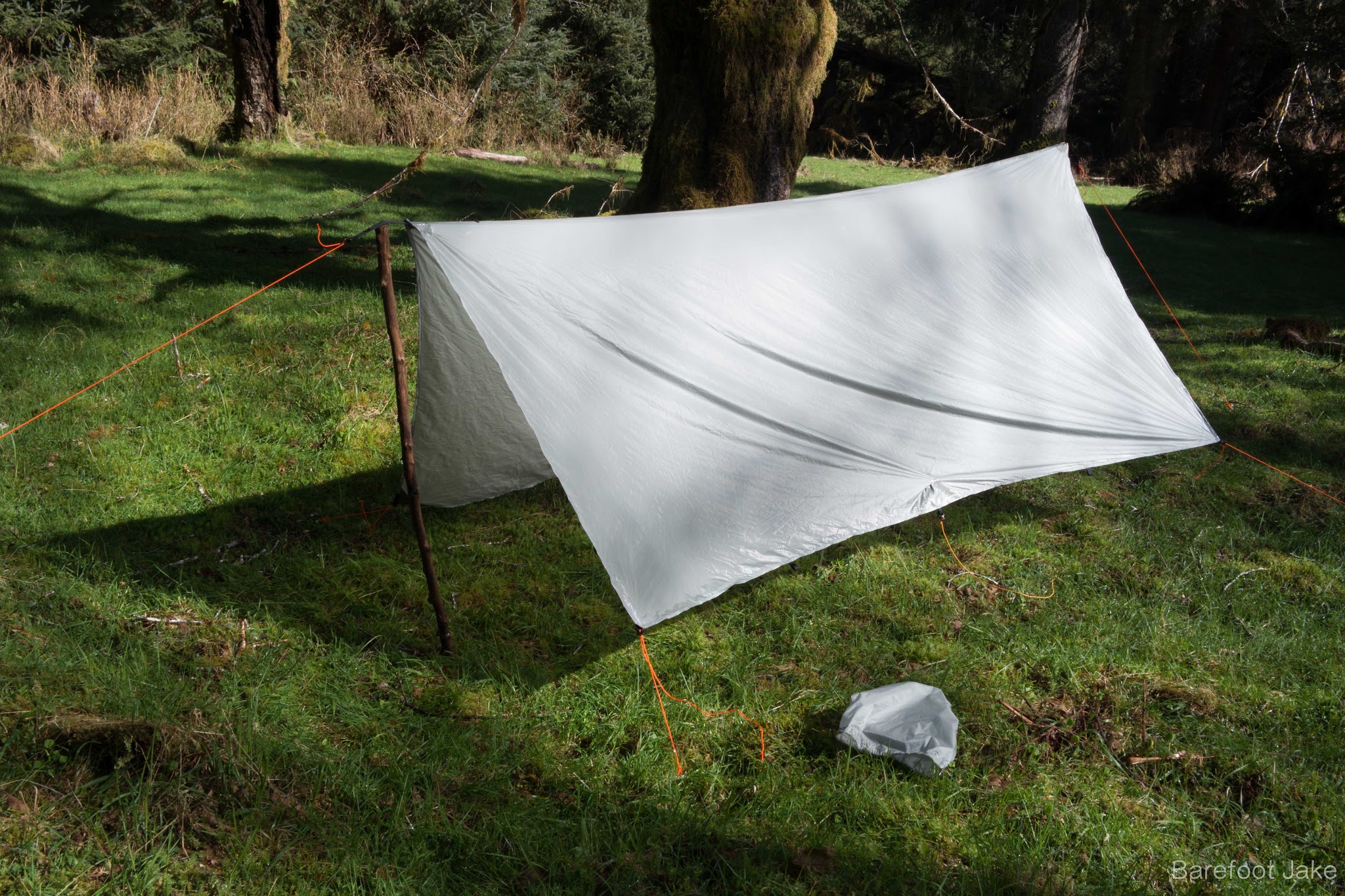Setting up my lightweight backpacking tarp in the rain forest. Camping under a tarp can be the perfect way to experience wilderness. A tarp can be a perfect thing to add to your
hiking gear list, when visiting Olympic National Park; since it rains so much in the Pacific Northwest. Some of the best sleep I have ever gotten was under a minimal shelter. I feel it has something to do with the amount non-restricted fresh air, that circulates around you; allowing for a more natural sleep.
In contrast to a traditional tent-- with a tarp you have a lot of flexibility to configure and pitch in many styles. With some creativity a camper can leave one side completely open. The height can also be adjusted by elongating the poles, finding longer sticks, or tying off the main ridgelines.
When using a minimal shelter- campsite selection is key to a peaceful night's sleep. When deciding on a place to sleep, I look at variables that may hinder my experience throughout the night. These include wind, game trails, low points where water can gather and tree hazards that may fall from above.
Imagine when it pours that the earth could turn into an inundated sea and you want to be on something that resembles a turtle's back to keep you safe and dry through the night. Find a small hill with a slight grade. The theory is that you want water rolling off your shelter and then away from where you sleep, this will also keep you more warm at night as well; since heat rises and cold sinks.
After a site is selected the next step is to take the tarp out of your backpack. For this pitch I'm going to use
6 V Tent Stakes. If the ground is soft or there is going to be wind- I will use large rocks and put them on all of the stake points for added security.
 |
| Step 1: Go hiking! Its hard to use camping gear at home. |
3 Tarps to Consider
*affiliate links
 |
| Take tarp out of the backpack. - Lay shelter out flat, if there is no wind. Depending on the length of your guylines, stake out the four corners, place stakes under the tarp. |
 |
| For this demonstration Im going to use sticks and not trekking poles, as some may choose to do. - Run the two main ridgeline guylines out in line with the seam of the tarp. The ridge must be very tight for a picture perfect pitch. Note: The four corners are completely lose, to ensure the ridge is tight. |
 |
| The main ridgeline has simple trekking pole tip grommets and a strong line tensioner. |
 |
| The tarp also has line tensioners on all four corners, plus two halfway down each wall. |
 |
| Camp is now made! I used a piece of groundsheet for the shelter floor. |
It's very important to master the skill of pitching a tarp before heading into the backcountry. I suggest testing a new shelter at home several times, to learn a perfect pitch. Practice makes perfect! You may also enjoy learning
how to properly pack your backpack for an adventure.
Last
updated by Barefoot Jake in 2025
Disclaimer: Barefoot Jake received the displayed tarp for use and testing.





